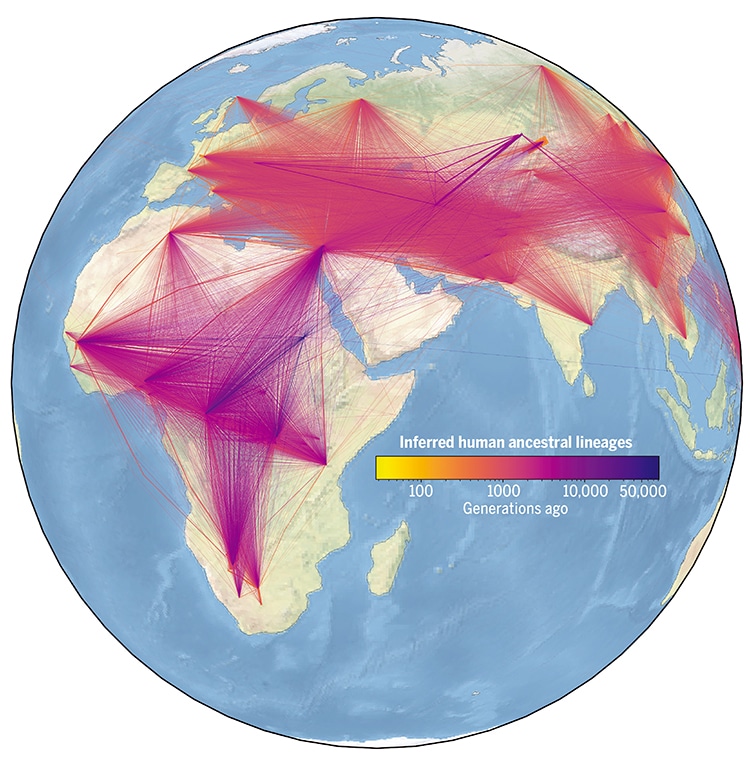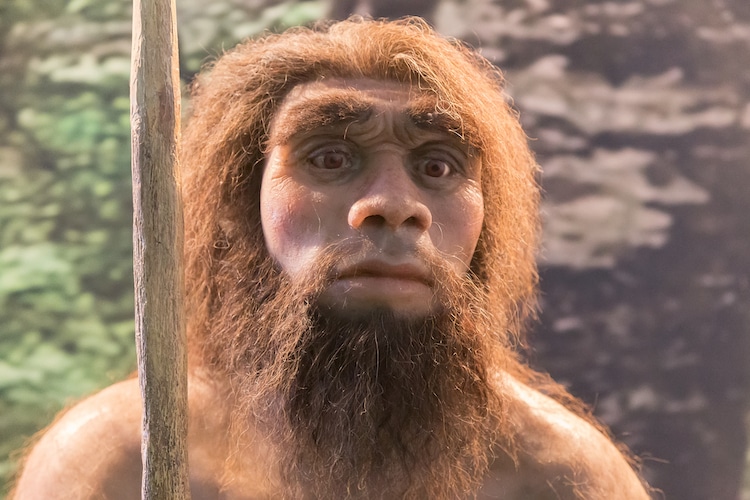Largest Ever Family Tree Has 27 Million Ancestors Revealing the Origins of Humanity

Visualizing inferred human ancestral lineages over time and space.
Each line represents an ancestor-descendant relationship in our inferred genealogy of modern and ancient genomes. (Photo and caption: Wohns et al./Science)
Perhaps you've used sites like Ancestry to construct your own family tree, peering back into the past to discover how your relations came to be. All family trees tell a story. In the pre-internet days, this work involved hunting through microfiche and archival records of birth, death, and immigration. Now, a fascinating global story has emerged in Science: the largest family tree ever created. Genealogical mapping by scientists at the University of Oxford and the Broad Institute of MIT and Harvard University has produced a tree of 27 million ancestors tracing human evolution and migration back one million years.
The project is born of the great advances in DNA sequencing and big data computing in recent decades. Researchers took genome data of 3,609 modern and ancient humans across 215 populations. Some of these samples are up to 100,000 years old. This massive data required an extremely innovative algorithm by the Big Data Institute at the University of Oxford. The algorithm notes genetic variations and hypothesizes backward to trace where those came from as the genome evolved and ancient humans moved locations. The end result maps 27 million ancestors.
Anthony Wilder Wohns, a postdoc at MIT who led the study, emphasized the importance of the map in a statement. “Essentially, we are reconstructing the genomes of our ancestors and using them to form a vast network of relationships. We can then estimate when and where these ancestors lived. The power of our approach is that it makes very few assumptions about the underlying data and can also include both modern and ancient DNA samples.”
He told Reuters, “The very earliest ancestors we identify trace back in time to a geographic location that is in modern Sudan. These ancestors lived up to and over 1 million years ago—which is much older than current estimates for the age of Homo sapiens—250,000 to 300,000 years ago. So bits of our genome have been inherited from individuals who we wouldn’t recognize as modern humans.”
Yan Wong, an evolutionary geneticist at the Big Data Institute and a principal author of the study, noted, “We have basically built a huge family tree, a genealogy for all of humanity that models as exactly as we can the history that generated all the genetic variation we find in humans today. This genealogy allows us to see how every person's genetic sequence relates to every other, along all the points of the genome.”
Such algorithms could be used to map the evolution of other species, including plants and animals. Accuracy will improve as technology does, and the team hopes to continue updating the tree as genomes can be added. While some findings of the tree remain unsupported by archeological evidence, it underscores the ways in which traditional historical approaches and cutting-edge science can combine to enrich the human story.
Through genealogical mapping and big data, scientists have created a visualization of human genetics and migration in the largest family tree ever made.

Neanderthal Figure, a recreation of a human ancestor (Photo: ARUIZHU/Depositphotos)
It comprises 27 million ancestors and goes back one million years.
h/t: [Smithsonian Magazine]
Related Articles:
10,000-Year-Old Skeleton Found in Britain Has a Modern-Day Descendant Living Close By
Researchers Discover That Humans Are 33,000 Years Older Than We Thought
New Evidence of Earliest European Humans Discovered in French Cave
Archeologists Discover Children’s Handprints in Cave From 200,000 Years Ago
READ: Largest Ever Family Tree Has 27 Million Ancestors Revealing the Origins of Humanity

0 Commentaires